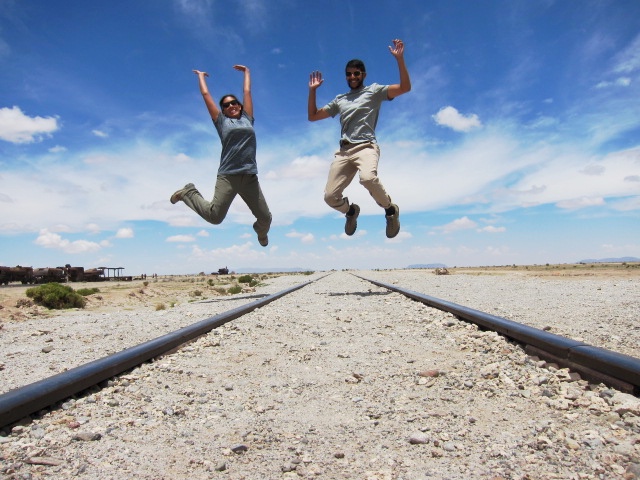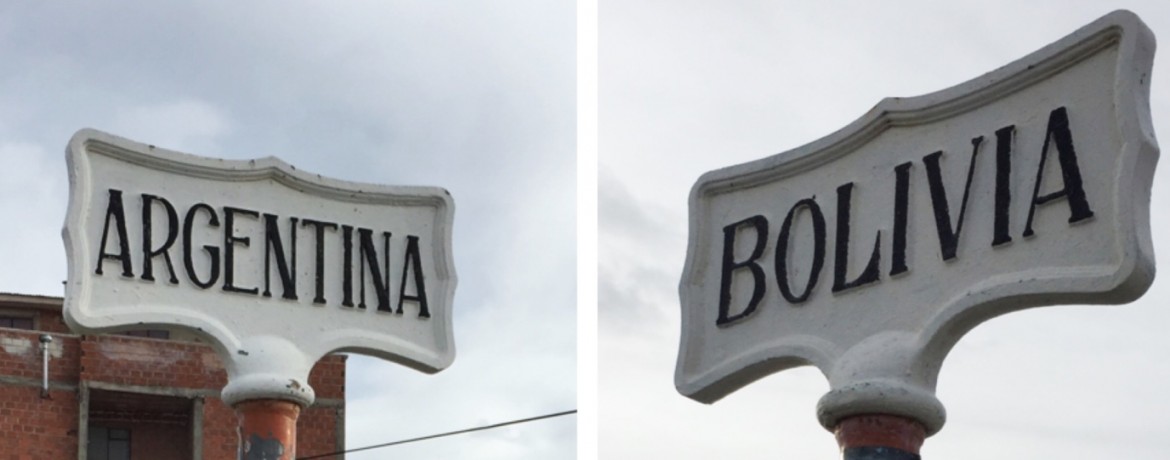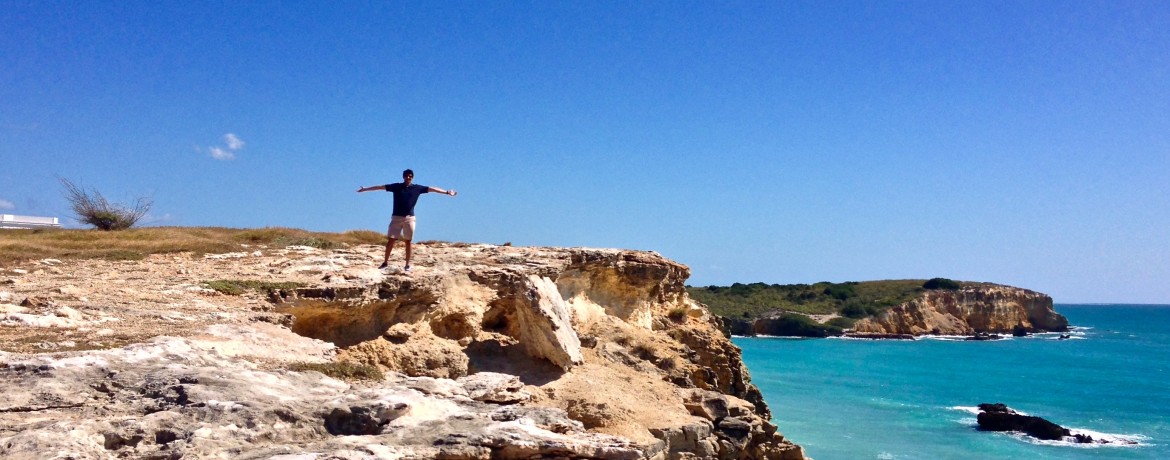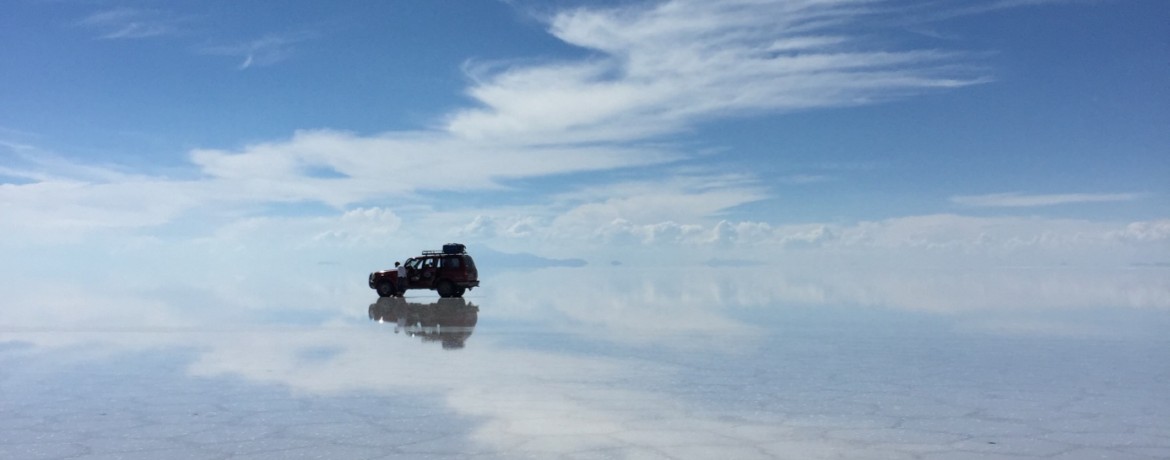Or rather, how not to. But we hope our experience can save future travelers from a few headaches and near-panic attacks. (Scroll to the bottom if you just want these key takeaways and not the full story!)
Part One: The Planning
It started simply enough. We left Mendoza and headed north to Salta to spend two nights regrouping before crossing the border into Bolivia. In Salta, we also planned to get our Bolivian visas from the consulate in town. We researched online—from the U.S. State Department website to various travel blogs on the topic—about what we needed to do for the visa:
- U.S. passport (obviously)
- 4 cm X 4 cm color photograph
- Visa application form
- Evidence of lodging confirmation in Bolivia
- Round trip ticket or copy of itinerary
- Proof of economic solvency (e.g., credit card)
- Proof of yellow fever vaccination
- Pay $160 USD fee
(We also read online that it could be possible to get visas at the border, but we figured since we had time in Salta we might as well do it ahead of time.)
So between our last day in Mendoza and first day in Salta, we sorted out the above items—we bought our tickets to get into Bolivia, booked lodging in the first city we would visit (Uyuni), and bought our exit bus tickets to Peru. We also made sure we had the appropriate visa application form and enough U.S. dollars to pay the hefty visa fee of $160 per person.
The first hiccup was relatively minor—we wanted to go to the Bolivian consulate in Salta on our first day in town, but we first needed to print copies of all our reservations. Unfortunately, by the time we were ready to print things, it was already siesta time and the Internet cafes were closed. By the time we printed things out, the consulate was closed, so we had to wait until the next day go there with our paperwork.
Part Two: The Consulate
Then here comes the next day—the same day when we have tickets at midnight to leave Salta for the Bolivian border. But we thought it wouldn’t take too long at the consulate—we had all the right paperwork, we had the money for the fee, and we thought there would be enough time before the consulate closed at 4:30.
So we had a leisurely morning at our AirBnB hostel and then strolled the mile to the consulate, arriving around 11 am.
First big surprise—consulate closes at 1 pm. Well, that should be fine, there’s no line, and we still have all our paperwork together. We should be done by then.
Second big surprise—we had our passports, yellow fever immunization card, and a credit card apiece, but we actually needed to provide copies of all these things to the consulate. But luckily, there was a shop about a block away where we could make cheap copies.
But the final and third big surprise—we had to pay the visa fee by direct deposit at the bank to the consulate’s account in Argentine pesos. Our U.S. dollars were useless (and Argentine pesos at the consulate would have been useless anyway, since we had to do all of this at the bank instead). AND—we couldn’t get our visas for another 48 hours to make sure the deposit cleared.
This was not what we expected would happen, especially when we already had our bus tickets in hand for that night (and a few other things booked for the next few days). We also learned that we could not get visas on the border, contrary to some other online sources.
We explained our situation and were very lucky that the consulate staff person working with us was sympathetic to our cause. He said if we could deposit the money and bring back the deposit slips by 1 pm to the consulate, it should be fine.
Part Three: The Bank
Then we were off! And then very quickly at a standstill again. At the bank, we had to draw numbers and there were about 45 people ahead of us. Further complicating matters, we actually didn’t have enough Argentine pesos on us to cover the visa fee. We withdrew the max we could from our debit cards, but still had a substantial difference to cover. So I waited impatiently in the main area, while Vikram ventured to another queue to exchange some of his U.S. dollars for pesos.
During the long, torturous wait at the bank, my thoughts turned from how much money will we lose if we have to push our plans back a day, to maybe we should just skip Bolivia entirely and avoid this debacle, to really just wanting a big bowl of pasta right now.
(Also during this wait, the power went out in the bank twice. Of course.)
Finally, our number was called — but there’s still another line to wait in. It’s around 12:30 right now, and I’m in full panic mode
And then finally finally, we get up the teller, deposit our money, get our slips, and rush out the door at 12:45 …. fifteen minutes to go. We grab another taxi and hit some traffic (not a surprise in a city that has no stop signs). I was so stressed out that I almost jumped out of the taxi to just run to the consulate.
But lo and behold, we arrive at 12:58, I kid you not. And as soon as we got in, they closed and locked the doors behind us. I almost fainted.
Part Four: All for Naught?
It’s not over yet (and kudos to you if you’re still reading this). We had everything actually in order now, and the consulate staff person said to come back at 8 am tomorrow for the visas. Our faces fell. Something must have been lost in communication earlier, so explained how we had a bus leaving for the border in t-minus 11 hours.
But this consulate man—true MVP of the trip so far. He said to come back at 5 pm, and it would all be fine. Seriously, this man was the best. So we left the consulate, got lunch and took a nap, and came back at 5 to our brand new visas.
Part Five: Bolivia Bound!
Once we had our visas in tow, it was smooth sailing. We took an eight-hour bus to the border town of La Quiaca, then walked across the border into the Bolivian town of Villazon, after a brief checkpoint. From there, we waited seven hours for our nine-hour train ride to Uyuni. But the 24 hours of travel time didn’t phase us, because we were officially headed to Bolivia!

TLDR: Lessons Learned
- If you’re getting a Bolivian visa at a consulate in Argentina, you must pay the visa fee in Argentina pesos by direct deposit at the bank. (The consulate will give you the appropriate information to do this.) You also need to allow for two days for your visa fee to clear.
- Many places in Argentina, especially in northwestern Argentina (where Salta is), close for siesta. Plan accordingly if you are going to the bank, Internet cafes, etc.
- The Bolivian consulate in Salta closes to the public at 1 pm (and opens at 8 am), so make sure you have time to get there, too!
- At the consulate, it’s not enough to just have your passport, yellow fever immunization card, and credit card (for proof of economic solvency)— you need to have copies of all these things for them to take (and you can’t make copies at the consulate itself).




7 Comments
That was nerve racking Mare’! Who took that picture of you and Vikram leaping for joy!😜
It was nerve racking! I couldn’t believe we made it to Bolivia as planned in the end. Our salt flat tour guide took the picture.
All’ well that ends well!
That’s for sure!
Wonderful story you’ll have to tell for the rest of your life!
I could see it all…just like a movie where everything goes wrong…until the nick of time. I swear I was holding my breath as I read this!!! You kids! Plucky lass, brave lad!
MIke Landers, you’ll have to tell Mary and Virkam the story about your and Sue’s adventures at the Moroccan border wheny you foot poweder was mistakenly but understandably viewed as another substance. Talk about stories y ou’ll have for the rest of your life!